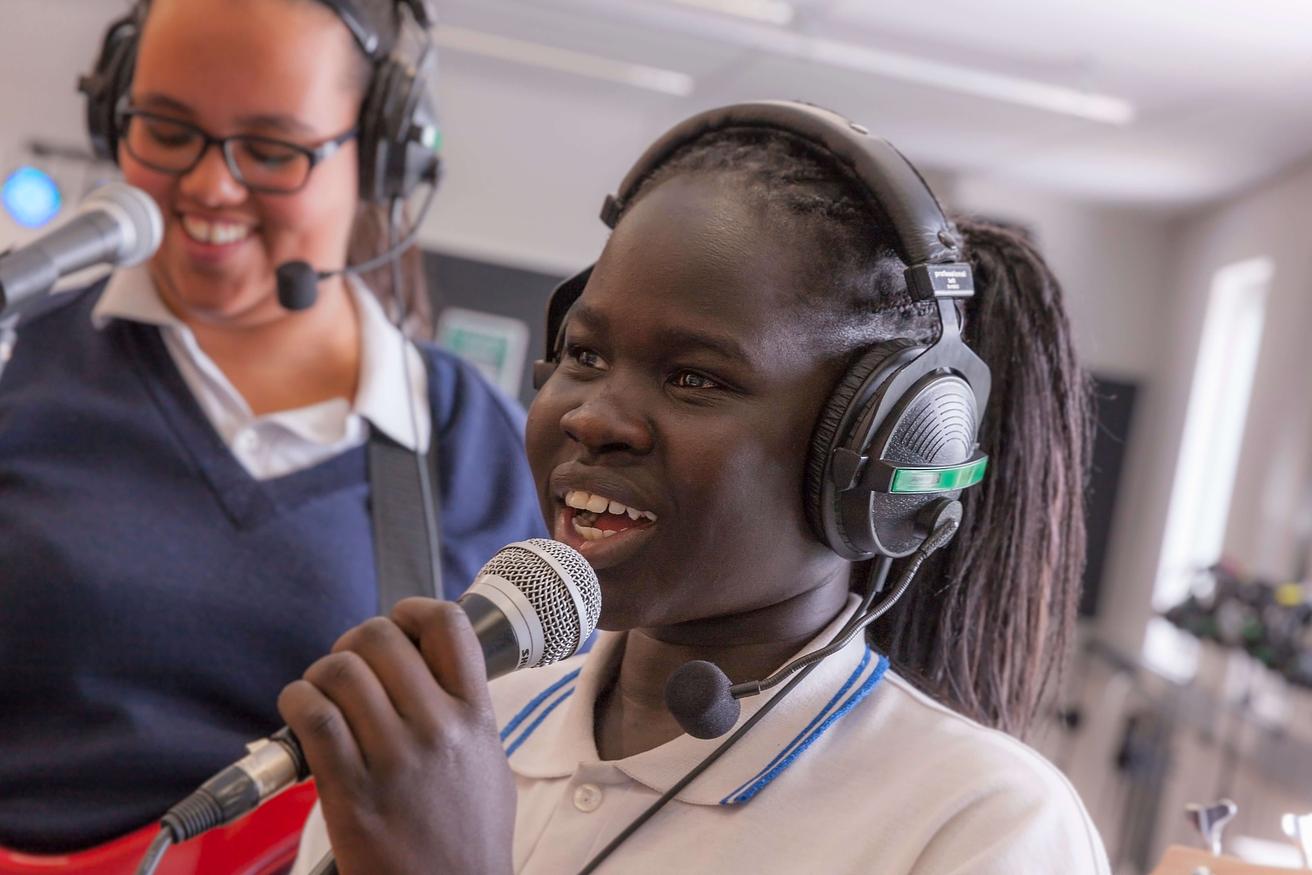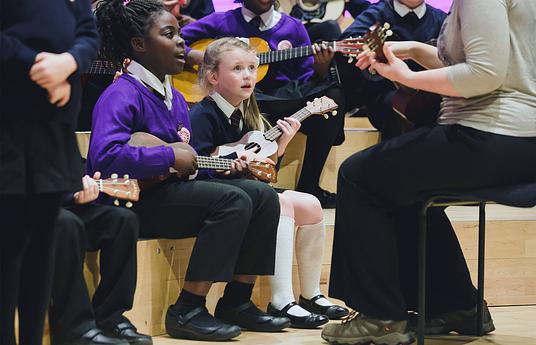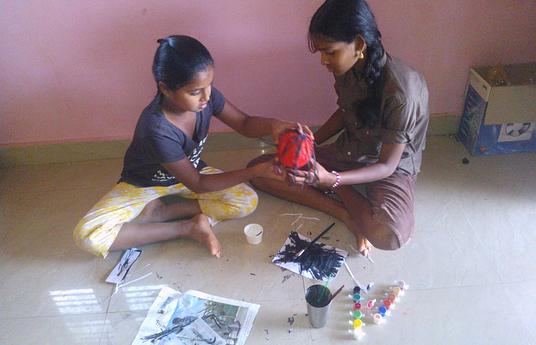Musical Futures is a not-for-profit organization that aims to bring relevant and engaging music lessons to as many young people as possible. Musical Futures is an approach to teaching and learning that is based on the real-world practices of popular and community musicians, making it relevant and engaging for kids. They offer training, resources and an international community of practice to help teachers provide accessible music-making in their schools.
The project started in 2003 and has been running for the last fourteen years. It started out as being aimed towards eleven to eighteen year olds, but has since grown to include children as young as eight. Even though they focus on school-aged children, people have taken their approach in adult music lessons too.
In a time where music lessons in high schools could face extinction, making the arts and music a part of society only accessible to those who can afford private education or private tutoring, Musical Futures provides a sustainable way to bring music back into mainstream education.
The main aims of Musical Futures is to provide engaging and relevant music education for as many young people as possible, and to work with teachers (both face-to-face and through online communities) to provide training in new and innovative learning methods for education in music.
Even though music education is internationally prevalent, it has traditionally been taught using more formal teacher-led approaches. Musical Futures grew out of a project funded by The Paul Hamlyn Foundation in the UK to look at why there was a perceived disconnect between a love of music outside the classroom with disengagement with school music particularly at age 14.
Musical Futures brings non formal teaching and informal learning into the more formal music classroom. The approach emphasizes real-world learning, using methods that are employed by popular musicians and community practitioners outside of formal settings. Musical Futures is an approach to learning and teaching music.
Although student choice, which is integral to the pedagogy, means that rock and pop genres are often a starting point, there is no specific musical style or genre. This means that it is sustainable and transferable to a range of learning contexts, both within the UK and overseas.
The teacher is encouraged to take a step back, to allow the children to lead their own learning and to facilitate the personalized learning pathways that emerge.
Personalized learning is quickly becoming known as a key ingredient in contemporary education. Allowing children to choose what they learn and how they learn it increases motivation, engagement, and confidence. Will Richardson, co-founder of modernlearners.com, explains the phenomenon.
‘The learning environments that are most productive are the ones where kids are working on projects that are interesting to them, asking questions that they’re interested in, working with other people and with their peers - places where kids really want to learn more about whatever it is that they are working on.’
What is it that makes Musical Futures so innovative? The reasons for it being innovative are two-fold.
Even though student-led learning isn’t a new phenomenon, it is something which is often ignored in standardized education, whereas Musical Futures embraces it and uses it to keep reimagining music classes. Teachers who have been using Musical Futures’ approach in their lessons don’t repeat the same things every year. Lessons evolve with the children, in response to socioeconomic changes, and to keep up with differing music tastes. All the while the structure remains constant, a framework which enables a young person’s self-led learning, as the lessons evolve naturally and organically in response to external factors.
The second reason, is its grassroots beginnings. The change comes from the teachers themselves, rather than waiting for the curriculum to change or relying on higher-up leadership. Musical Futures helps to facilitate this ground-up change.
This all sounds like a lovely idea, but does it actually work? An independent study, carried out by the Institute of Education, found that Musical Futures impacted young people in a variety of ways. There was an increase in motivation, more positive attitudes towards music in school were established, plus pupils’ self-esteem and confidence increased dramatically.
The teacher is encouraged to take a step back, to allow the children to lead their own learning and to facilitate the personalized learning pathways that emerge.
"
Along with these personal attributes that affected other areas of their education, young people also learn musical skills and techniques. Working in a band meant they had to be creative and able to cooperate and collaborate; key skills which transfer to other subjects as well as helping to prepare them for working life.
Allan Kjaer Andersen, Principal of Ørestad Gymnasium in Copenhagen (a school renown for its innovative learning environment), explained to us why these skills are so important, ‘In order to innovate you have to be able to collaborate. In order to be a global citizen you have to have empathy and believe in yourself, have resilience and things like that. These skills are just as important as the traditional subject skills.’
Anecdotally, Musical Futures has heard from schools that the young people involved are more positive about school and so their willingness to learn transfers to other subjects. This motivation carries students through their school life, meaning that they go on to study music at examination level or create bands outside of school.
The most valuable outcome of Musical Futures is that students who previously thought they didn’t or couldn’t access music now feel like they can.
There are also strategies in place to adapt the process for different student’s needs. Over the years, strategies have been developed in response to direct teacher and student feedback so that the approach is suitable for all learning styles.
The project has already spread to seventy-two countries. Once the pedagogy is translated, it’s easy to spread around the world. The practical nature of the Musical Futures approach means that language barriers are less of an issue.
It has been spreading naturally and organically without much push at all. There is clearly something about Musical Futures that is attractive and welcoming for teachers and students around the globe.
The drive isn’t strategic, but simply because people on the ground feel it’s something they want to be a part of.
Musical Futures in Australia has largely been responsible for most of the recent international development of the project. In particular responding to the increasing demand for Musical Futures in Asia, with a program having just completed in Kuala Lumpur and commencing work in New Zealand, Hong Kong, Shanghai, Bangkok and Dubai in the near future.
In addition to this, Musical Futures has been adopted in the state of Victoria to help increase access to music education in over 1,600 schools. They are currently working with the Victorian Government and the Department of Education & Training on this. The formal adoption of Musical Futures approach by an education system is unique and goes to show how leadership can take an active role in innovating education. In fact, Musical Futures was included in the local government's election promise. More information about their work in Australia can be found here.
Even though the innovation has met its own goals of enabling students to learn music in new and personalized ways, the new challenge is to fit it within a rapidly changing education system. The only thing holding Musical Futures back is getting the word out so that teachers know about it. We at HundrED hope to be able to help with that.
The drive isn’t strategic, but simply because people on the ground feel it’s something they want to be a part of.
"
Teachers can learn about the practice either through the materials and videos that Musical Futures provide, or they can attend the training sessions that they host too. The training session puts teachers in the position of their learners to help enhance their teaching practices, and focuses on reminding teachers of their musical roots – bringing inspiration and fun back into teaching music. The training days also provide some excellent networking opportunities.
Musical Futures recognizes that it can be difficult for some teachers to come out of schools due to time and budget restrictions, so they provide different solutions to support teachers so that they can access the materials and introduce the Musical Futures approach in their schools.
Musical Futures has proven to be an innovation we can all learn from. It tackles the challenges facing music education head-on by reinvigorating teaching practices and inspiring ground-up change by teachers.
Whereas in Australia leadership bodies have been in the position to back the project, the work of Musical Futures in the UK and other countries shows that it's not always necessary. If we empower teachers and enable them to make the change, music education can continually be innovated year on year.

 Teachers are encouraged to take a step back and to allow students to lead their own learning.
Teachers are encouraged to take a step back and to allow students to lead their own learning. Students create their own bands to play the music they actually like.
Students create their own bands to play the music they actually like. Musical Futures focus is to support teachers as much as possible.
Musical Futures focus is to support teachers as much as possible.

